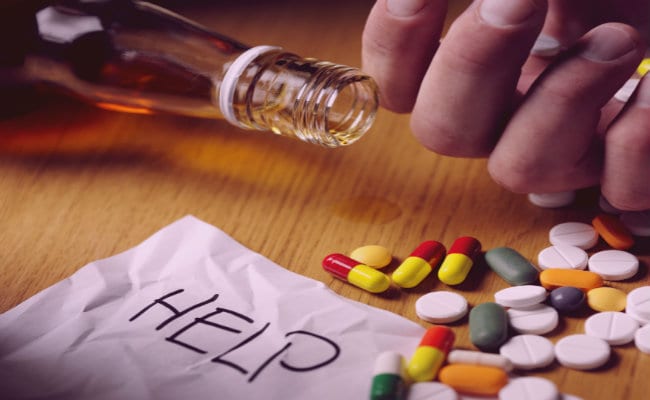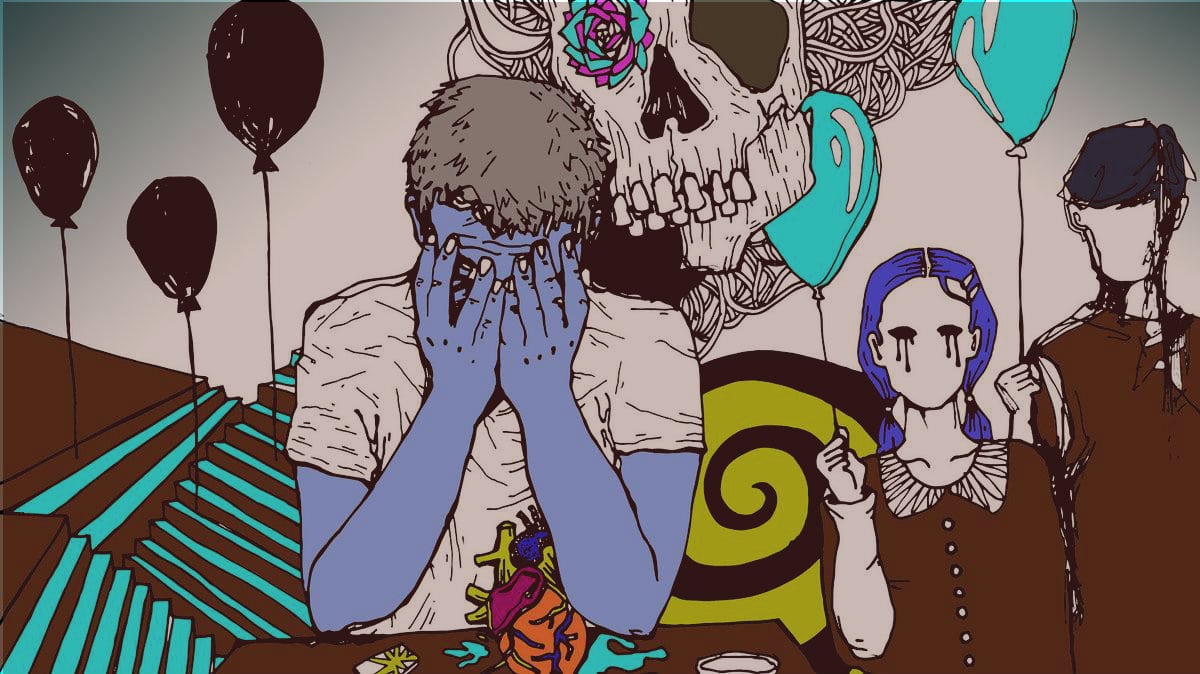In a strict sense, the word drug was defined by the World Health organization (WHO) to refer to substances that cure or prevent diseases; however, many of them tend to generate addiction since they produce in the individual a transitory sensation of well-being, therefore, whoever consumes it is tempted to repeat its use to be able to access that pleasant state over and over again. From there derives the context in which this word is usually used, and which refers to the "misuse" that is given to it.
Among the main consequences of drugs is the addiction that it generates, and as a result of it, a series of secondary effects are derived that can be classified as: physical, psychological and social. Considering that it alters all these areas, it can be said that despite being used by many as a means of “escape", since they usually see in these substances a support to face their reality, their use is far from representing an alternative solution, because the price that is paid is much higher, since drugs destroy your neurons, altering your physical capacities and mental, limiting your possibilities.
How do drugs affect your integral development?
Even when we are measured, and we follow the instructions of a doctor, the use of chemical substances generates side effects in the organism, which can be controlled if it is acted under medical prescription. However, if it is a case of "misuse" in which dependence on the substance leads us to relapse, the organism will experience a gradual deterioration, and in addition to this, mental health and emotional stability to face situations will be seriously altered. On the other hand, the social development and adaptation of those who consume them is difficult due to the personality disorders generated by the alteration and deterioration of neurological structures and processes.
Among the consequences of drugs we have that they destroy your body, affecting your health, thus limiting your activities, your learning capacity, your relationship with family and friends, in short, they cancel you out in all important aspects, to the point that your life ends up focusing on them.
Consequences of physical appearance

- Cancer: One of the most terrible consequences of the use of drugs is this condition, defined in general terms as the imbalance in the process of cell division, which generates abnormal growth in tissues and organs. How can drugs cause this disease? I know it sounds paradoxical, after all, they were developed in order to cure diseases, not to produce them. However, the indiscriminate use of these substances alters the balance of the biochemical processes of your body, and this translates into mutations of genes and cells, and this is the starting point of this accelerated growth called tumor, carcinoma, sarcomas, etc.. It has been proven through studies that one of the main causes of lung cancer is the consumption of cigarettes and tobacco, which despite being legal, are quite harmful to health.
- HIV: This terrible virus that directly affects your immune system, and makes your body vulnerable to diseases such as: pulmonary tuberculosis, candidiasis, toxoplasmosis, pneumonia, skin conditions and stomach conditions. Simply put, this virus attack your immune system and spreads in lymphoid tissue and lymph nodes, which are what help your body to recognize and defend against pathogens and infections, leaving you vulnerable to a disease as harmless as a cold. At this point you may be wondering What role do drugs play in this? Well, many drugs are administered intravenously, and it is common for syringes to be used by several people, apart from this, the lifestyle of many drug addicts is quite messy, and is characterized by irresponsible and promiscuous sexual practices.
- Cirrhosis and liver conditions: La hepatoxicity It is quite common in those who take drugs regularly, and depending on the frequency of ingestion and the type of substance, it can lead to serious diseases such as: cirrhosis, fatty liver disease, and even liver cancer. Then, another of the consequences of drugs is that they attack the proteins of the hepatocyte (the liver's own cell) and the response of this entity can be a immunotolerance, desired case, since the substance is assimilated and does not cause negative impact; but unfortunately, drug abuse cases lead to functional and anatomical damage to the liver (hepatoxicity), which is the starting point of other serious injuries.
- Heart conditions: Most drugs they cause cardiovascular problems because as a consequence of the drugs body temperature, blood pressure and heart rate rise. Cardiovascular toxicity is not dependent on dose and route of administration. Its combination with alcohol increases dependence, they are more toxic and can lead to death in young people with healthy hearts. According to an important study by Minnesota Business Men and of Framingham, a relative risk of sudden cardiac death was demonstrated 10 times higher in male smokers and 4,5 times higher in women who smoke and consume psychotropic substances.
- Pregnancy: During the gestation process, the baby depends directly on the mother, and its proper development depends on factors such as food and the environment that surrounds it (stressful situations can be highly harmful). When the mother ingests drugs, the baby is exposed to risks such as premature birth, growth retardation, malformations, blindness, even diseases such as AIDS can be transmitted to the baby. Also the death of the fetus is a consequence in chronic cases of drug abuse.
Psychological consequences

Dependence can be compared to an obsession, because another of the consequences of drugs is that they directly affect the nervous system, which generates hallucinations, psychotic behaviors, paranoia, insomnia, depression, and altered mood. The most terrible consequence of the use of drugs is that as time passes your body he is becoming immune to them, so you must incur a high repetition rate and / or increase the doses.
- Deterioration of brain structures: When a person ingests a foreign chemical it is modifies brain chemistry, which affects the proper functioning of certain structures. Depending on the specific substance that is consumed, the effect that it will produce in the brain will be different. For example, some drugs such as cocaine or amphetamines cause neurons to release an unusual amount of neurotransmitters. On the other hand, drugs such as marijuana and heroin, by containing a chemical similar to that of neuronal transmission, activate neurons in an unusual way.
- Paranoia: This is a direct consequence of the neuronal imbalance as a consequence of the drugs. These alterations at the level of the nervous system that include destruction of neurons and alterations in fundamental structures such as the brain stem, cortex and limbic system, translate into unwanted effects such as paranoia, the addicted person tends to experience episodes of psychotic delusions , characterized by hallucinations, in which the person manifests panic in non-real situations (produced by their altered psyche).
- Disorder in sleep and behavior patterns: Many drugs are composed of stimulant substances (Example: nicotine, cocaine, and amphetamines), which act through neurotransmitters such as norepinephrine and dopamine, both linked to effects promoting alertness, wakefulness and attention in the active state of the nervous system. preventing sleep conciliation, which in chronic cases can last up to more than 4 weeks. In addition to insomnia, as collateral effects there are the modification of behavior patterns of the person, depression, irritability, alteration and violent reactions.
Consequences of social aspect

Studies carried out in multiple investigations have established as a consequence of drugs the tendency to isolation. What is gradually transforming into cases of social maladjustment, thus increasing the possibility of engaging in violent acts against the environment (theft, murder, rape).
- Isolation: As part of the development of addiction, the person tends to move away from the environment, especially if it manifests rejection of drugs, tending to hide in itself for fear of showing its dependence, also as a consequence of drugs the addict develops patterns of paranoid and aggressive behavior that prevent him from adapting to function in social environments.
- Unemployment and extreme poverty: A high rate of the population that consumes drugs is prevented from completing their primary studies, either due to the decrease in their cognitive abilities (product of alteration of brain structures), or due to the lack of motivation and lack of interest associated with their condition, for this reason they lack the skills to apply for qualified jobs. In addition to this, they do not have constancy and determination to keep the jobs they get, since the addiction it becomes their priority in life, which leads them to be absent from work, and to develop undesirable attitudes such as non-compliance with their work, aggressiveness and bad relationship with their colleagues. This inability to develop in stable work environments leads them to poverty conditions, which can turn into street situations (homeless) since in many cases the person leaves their home motivated by that need for isolation and by the feeling of incomprehension that the environment's rejection of their harmful habits arouses. All this panorama can be aggravated when the addict is the guardian of minors, since it is far from guaranteeing acceptable living conditions.
Vulnerable population
The stage of human development most susceptible to influencing an addiction to psychotropic substances is between adolescence and early adulthood, since in this phase the personality traits themselves begin to be defined, which makes the person unstable and with tendency to live in long periods of questioning oneself and the external world, which can awaken states of confusion that can lead to drug use. Likewise, the desire for social integration can awaken in young people the adoption of this harmful habit.
In a lower percentage, people who go through deep crises such as: divorce, unemployment, bereavement, are also vulnerable to generating addictions.
As a consequence of drugs, addicts become a social problem, since most of them are plunged into situations of extreme poverty, due to the physical-emotional deterioration and the incapacity for social adaptation, preventing them from taking care of themselves, so they cannot provide themselves with decent living conditions. Most of the cases of family abuse are associated with drug problems among family members.
Campaigns and actions
After evaluating the consequences of drugs for the development of nations, multiple associations such as the Organization of American States (OAS) and the World Health Organization (WHO) have developed studies, in which it has been defined that the Primary preventionIn other words, preventing the individual from using drugs for the first time is the key to attacking the problem. Understanding that one of the factors that induce drug use is the lack of correct guidance and poor communication with parents, campaigns have been developed in schools to awaken in adolescent children awareness of the impact that drugs generate. Among the policies pursued by multiple nations is the development of extra-school activities that keep children and adolescents in healthy environments, where leisure is prevented from leading them to use these substances. The presence in schools of tutors and counselors, make available to them timely advice, which allows them to draw up plans and goals and clear doubts in the correct way.
In addition to the preventive campaign, as part of the actions aimed at minimizing the impact of this social problem, treatments have been developed to support those who have developed addiction. In addition to the detoxification process, complementary therapies have been developed to reduce the possibility of relapses. Among several, they can be named: cognitive behavioral therapy, which is based on the theory of social learning, which states that consumer behavior is learned, and therefore can be unlearned through the acquisition of different skills; the motivational therapy seeks to get people to see changes in their behavior; and finally there is the well-known twelve step intervention, which consists of a recovery model, based on the therapy developed by the Alcoholics Anonymous group.